The National Guard has made many significant contributions in its 383 years of existence, but these are the top 10 most important events that helped shape today’s National Guard.
1. The First Muster December 13, 1636
All males between the ages of 16 and 60 were required to join one of the Massachusetts Bay Colony’s three regiments upon their establishment Dec. 13, 1636, marking the beginning of the first organized American fighting force. This early version of what would become state militias first mustered in early 1637, drilling once a week and pulling night duty in case of attacks from Native Americans.
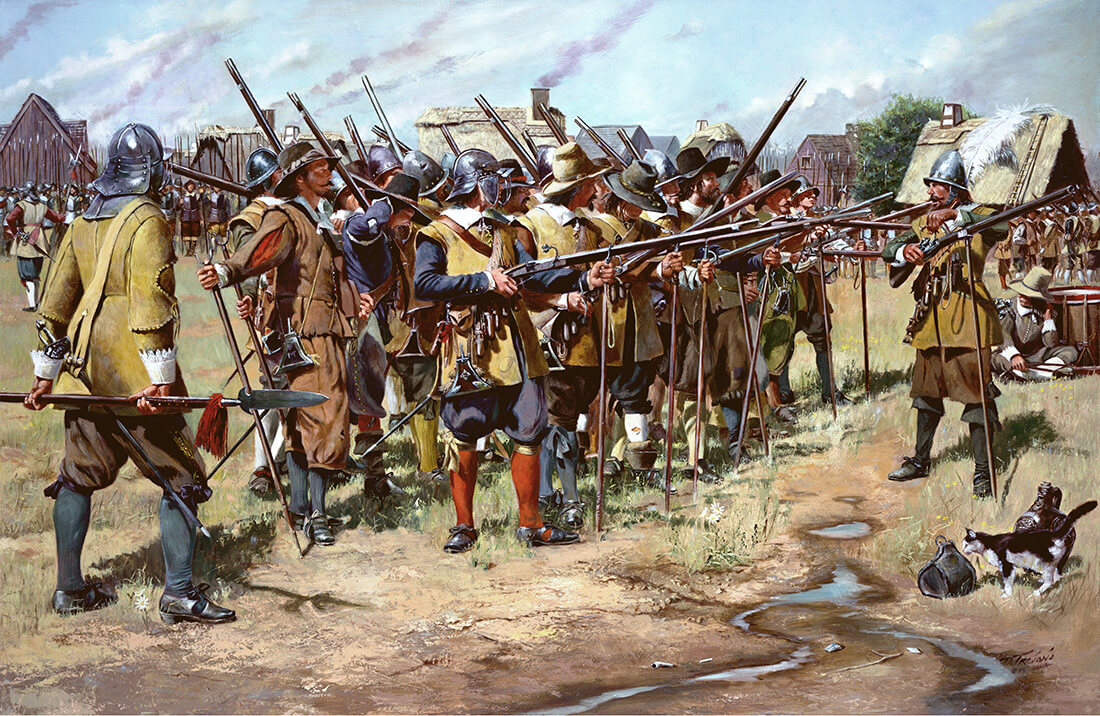 The First Muster
By Don Troiani
The First Muster
By Don Troiani 2. American Revolution April 19, 1775
When Major John Buttrick shouted “Fire!” April 19, 1775, he was doing more than telling his Middlesex County (Massachusetts) Regiment to defend themselves. He was igniting the American Revolution. The battles of Lexington and Concord showed Americans were willing to fight and able to inflict significant casualties on their rivals. The incident also introduced the phrase “The Shot Heard ‘round the World.”
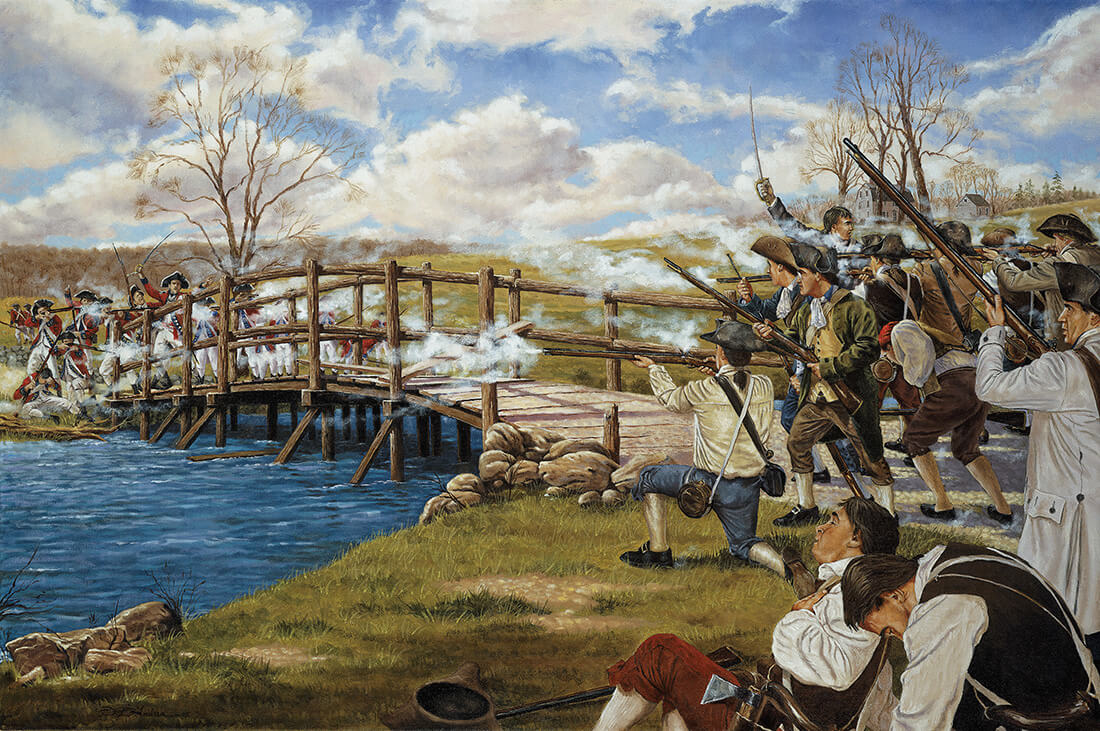 The Shot Heard 'Round the World
By Domenick D'Andrea
The Shot Heard 'Round the World
By Domenick D'Andrea 3. 20th Maine Infantry July 2, 1863
A pair of militias fighting under the Union flag proved crucial to holding off the Confederacy during the Battle of Gettysburg, turning the tide in the Civil War. The First Minnesota Infantry plugged a hole in the Union line July 2 that would have been fatal had it been exploited by the Confederates. The same day, the 20th Maine Infantry performed one of the more significant feats of the Civil War. Holding down the far left flank of the Union line, the Mainers fended off six charges. Knowing his men didn’t have the firepower to withstand a seventh engagement, 20th Maine’s Colonel Joshua Chamberlain ordered a bayonet charge that caught the Confederates by surprise, ending the threat to the Union flank. Chamberlain received the Medal of Honor.
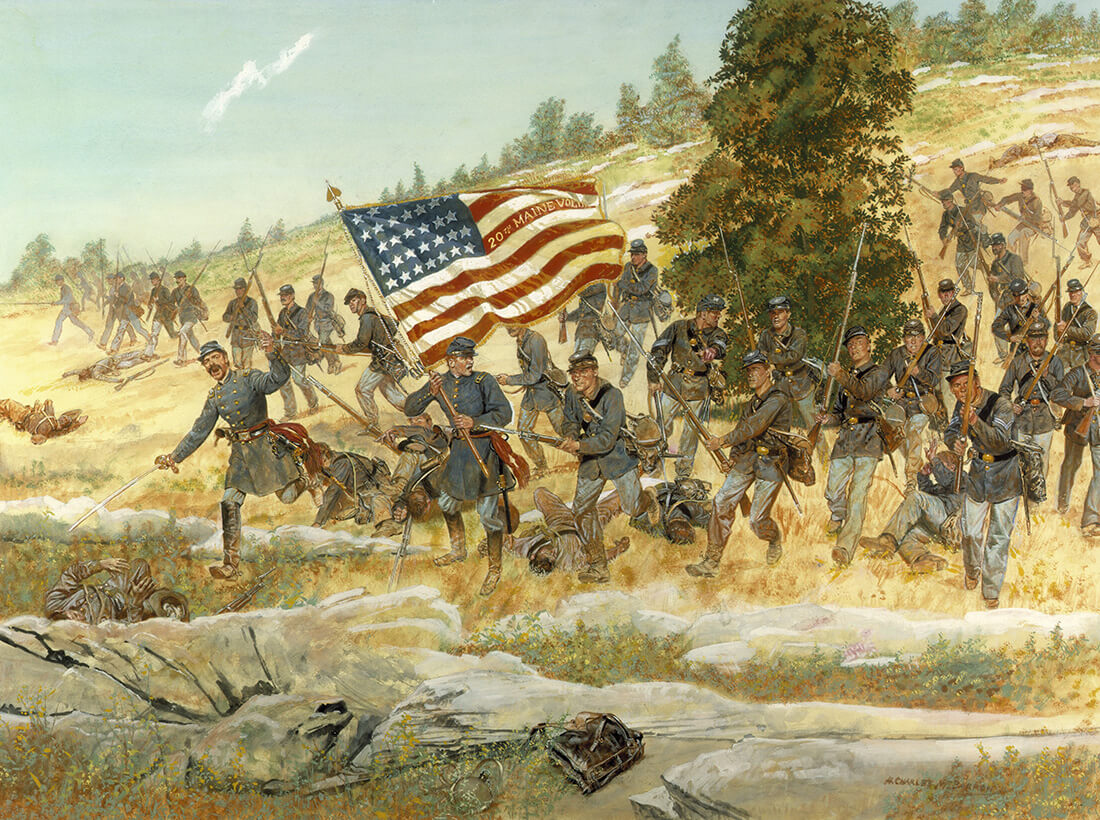 The Twentieth Maine
By Dominic D'Andrea
The Twentieth Maine
By Dominic D'Andrea 4. The Dick Act January 21, 1903
The Dick Act is signed into law, marking the first federal legislation that codified the transformation of state and local militia into the modern National Guard. It was named for Charles Dick, an Ohio National Guard officer and who also served as a Senator and Congressman. Not since the 1792 Militia Act had there been a federal statute that sought to improve militia training, readiness, and standards, financed by federal instead of state funds. Later laws in 1908, and especially in 1916, further contributed to the Guard’s status as a versatile state and federal military force.
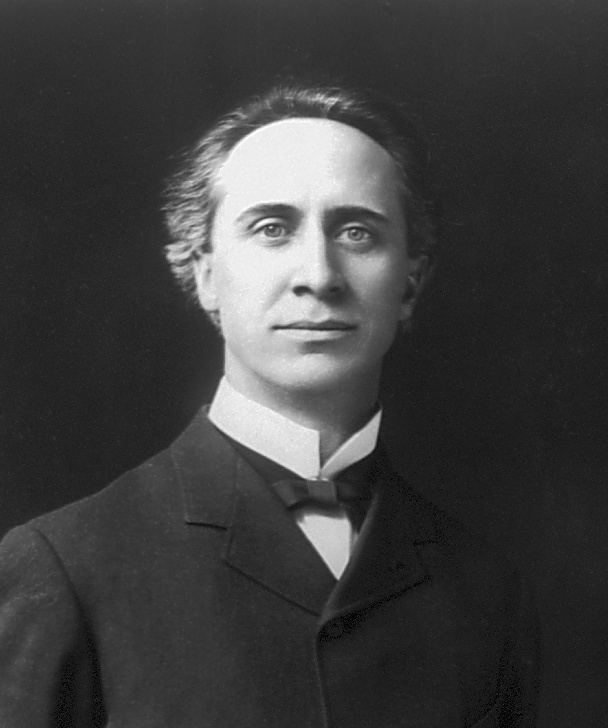
5. Harlem Hellfighters September 1918
America entered World War I in 1917. A year later, a pair of historic Guard stories unfolded on the fields of Europe. Harry S Truman, then a Captain in the Missouri National Guard, was part of the combat debut of the U.S. First Army in May 1918 in Argonne, France. Later that fall, Harlem’s “Hell Fighters” proved their mettle. The 15th New York Regiment, rebranded the 369th Infantry Regiment upon their arrival in Europe, was an assembly of black Guardsmen who fought valiantly in the Meuse-Argonne offensive. The entire regiment of “Hell Fighters” was awarded France’s Croix de Guerre for heroism.
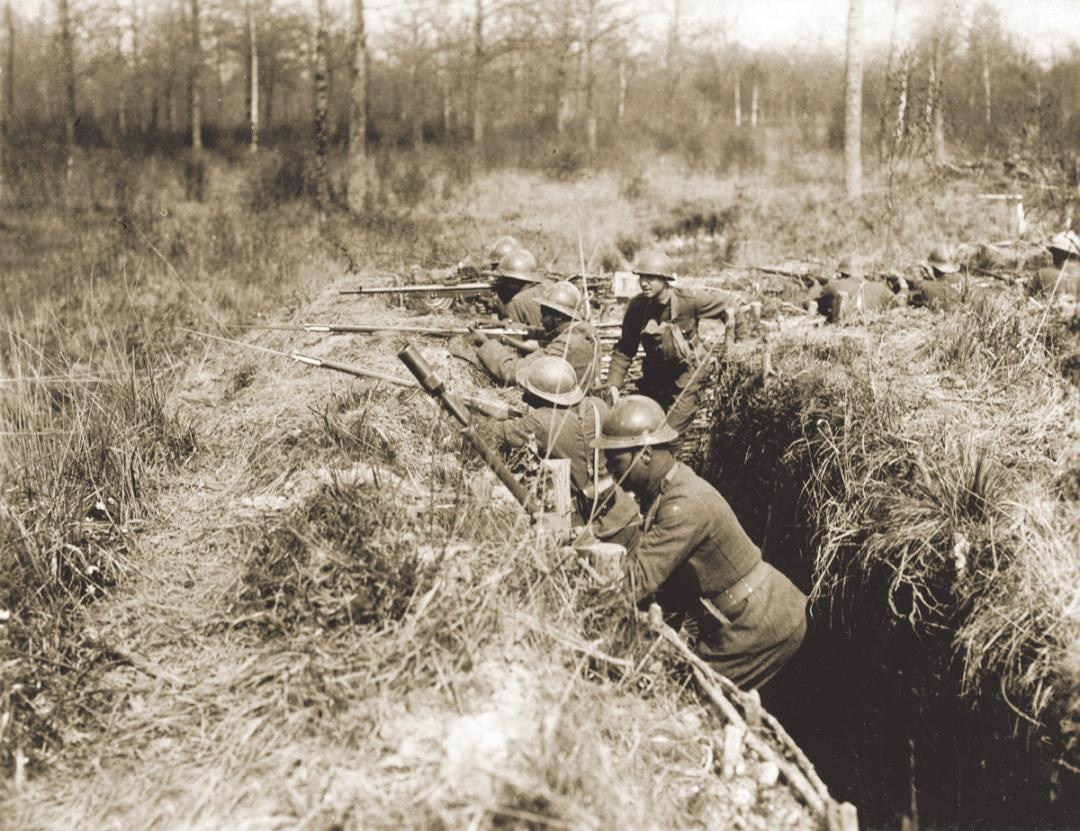 Soldiers of the 369th Infantry Regiment man a trench in France during World War I.
Soldiers of the 369th Infantry Regiment man a trench in France during World War I. 6. World War II September 1940
World War II prompted President Franklin Roosevelt to call-up the National Guard to train for one year, doubling the size of the U.S. active duty force. Before joining the fighting overseas (to include the D-Day invasion), Guard units participated in a series of battlefield exercises that helped military leaders correct tactical flaws.
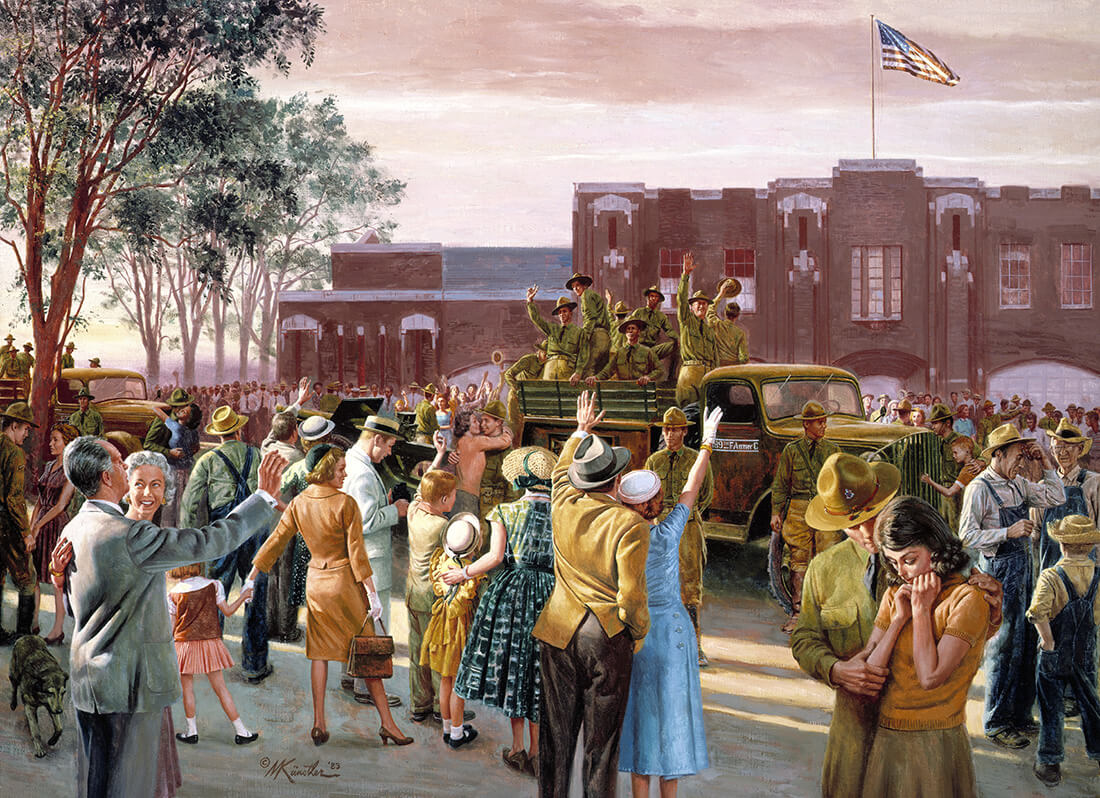 Goodbye Dear, I'll Be Back in a Year
By Mort Kunstler
Goodbye Dear, I'll Be Back in a Year
By Mort Kunstler 7. Total Force Policy August 1990
As the Vietnam War drew to a close, the DoD switched to a Total Force policy, mandating that National Guard troops deploy alongside their active duty counterparts in support and combat roles for all future conflicts. This policy proved effective during the 1991 Gulf War. The eventual downsizing of the Army ultimately led to a greater reliance on the Guard forces in conflicts and humanitarian missions.
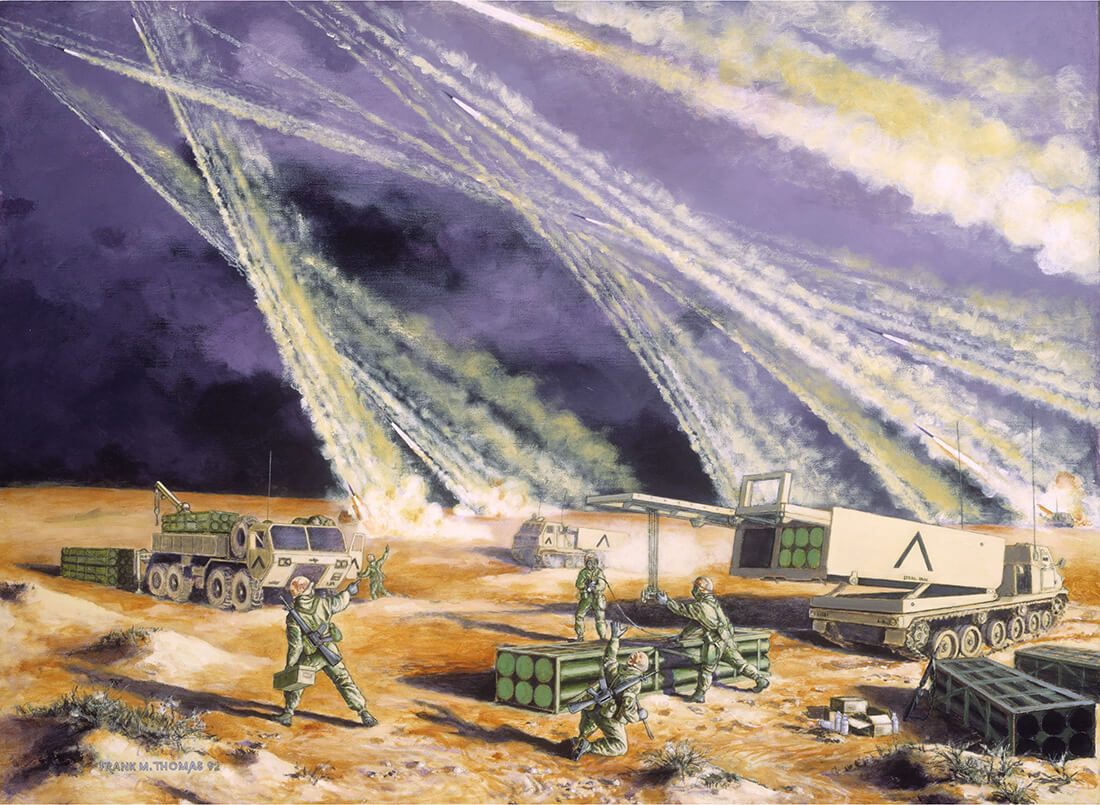 'Steel Rain:' The Army National Guard in Desert Storm
By Frank M. Thomas
'Steel Rain:' The Army National Guard in Desert Storm
By Frank M. Thomas 8. Birth of the State Partnership Program April 1993
Shortly after the collapse of the Soviet Union, the State Partnership Program was born, pairing like-minded National Guard states Maryland (Estonia), Michigan (Latvia) and Pennsylvania (Lithuania) with military forces from other nations. Today, the National Guard has partnerships with 84 countries spread across five continents. The trust and familiarity built through regular SPP engagements and exchanges has produced more willing and capable partners. These alliances give the United States an unmatched advantage over its competitors.
 U.S. Army photo by Staff Sgt. Kimberly Bratic, Michigan National Guard
U.S. Army photo by Staff Sgt. Kimberly Bratic, Michigan National Guard 9. September 11, 2001
Guard members are called-up to provide security on the ground at airports and to protect the air space over America. Their combat mettle was also tested. National Guard members have supported more than 1.1 million overseas deployments to Iraq, Afghanistan and other locations since the attacks of 9/11. The sustained combat operations also contributed to the Guard’s transformation from a strategic reserve to a fully operational force of 453,000 Soldiers and Airmen.
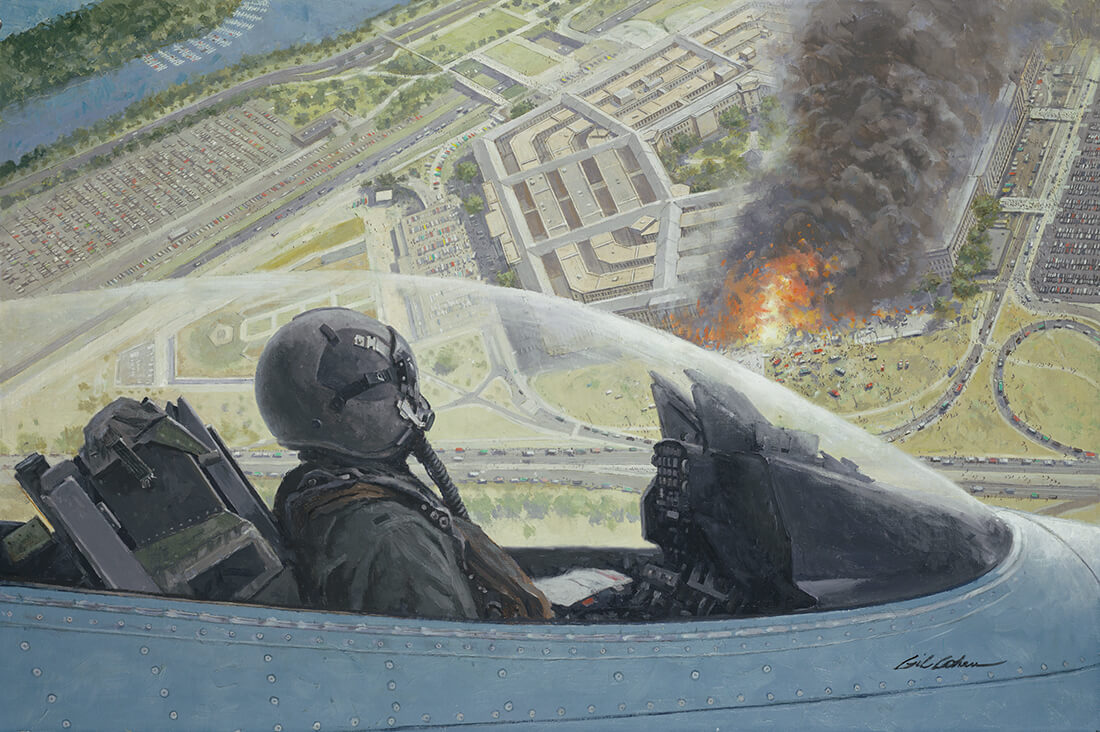 The Pentagon, September 11 2001
By Gil Cohen
The Pentagon, September 11 2001
By Gil Cohen 10. Hurricane Katrina August 2005
Four years after the 9/11 attacks, Hurricane Katrina wrought devastation upon America’s Gulf Coast. Supporting the storm challenged America’s Citizen-Soldier and Airmen force, as nearly 80,000 Guard members were already federalized to fight in the Iraq and Afghan wars when Katrina hit. Still, more than 51,000 Guardsmen and women from across the country quickly deployed to Louisiana and Mississippi to save lives and assist in recovery efforts.
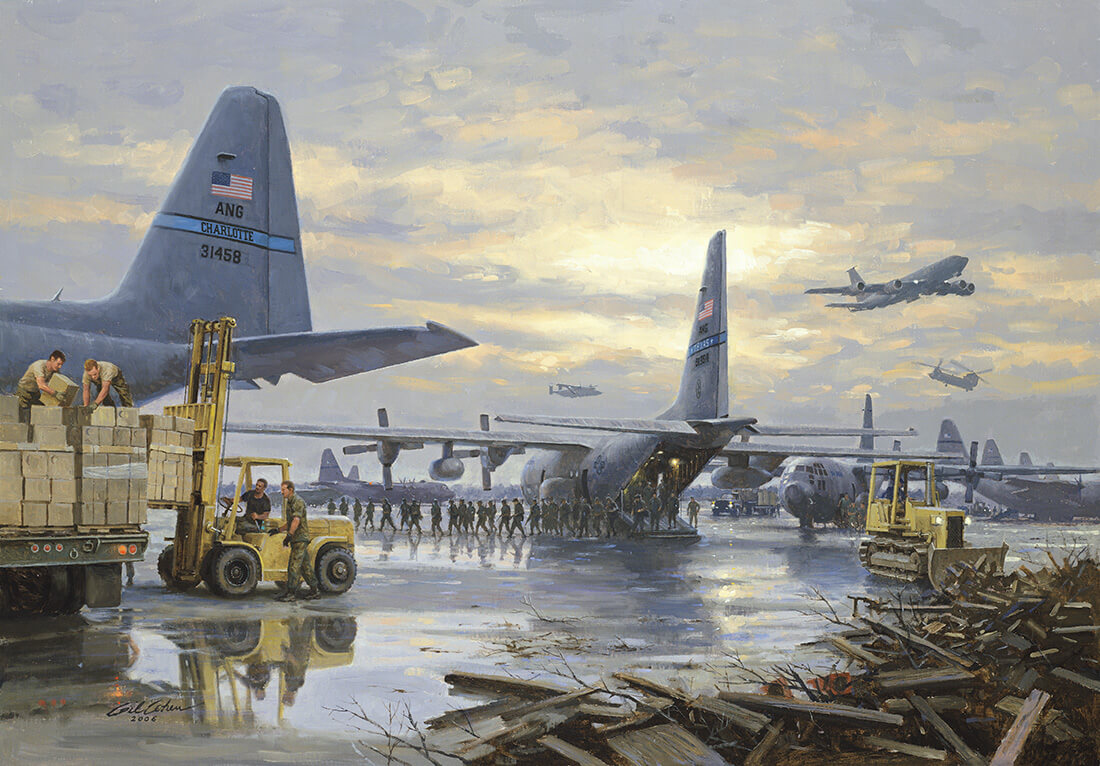 In Katrina's Wake
By Gil Cohen
In Katrina's Wake
By Gil Cohen